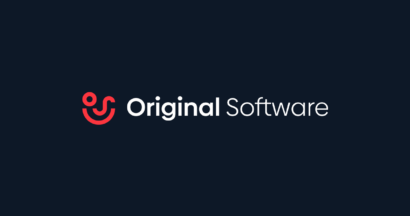As we enter the New Year, the question about what 2022 has to offer comes to mind.
As software testing tools improve, what are QA professionals and organisations focusing on to maximise their productivity and achieve their testing goals?

What are the top software testing trends this year?
The role of testing and Quality Assurance (QA) continues to change and evolve.
The importance of QA has been elevated and is now becoming more strategic. Investment in QA has now become a top priority for CIOs to help accelerate application improvements, deliver business goals and reduce reputation damage and risk associated with application outages.
Ultimately, the business needs to ensure it can achieve more quality, at speed, and the role of QA is crucial in delivering this.
So, reviewing the industry and discussing with our customers and partners, 2022 holds many exciting changes and improvements to software testing.
What 2022 holds for the future of testing:

Integration of tools
The world of software testing has many different tools, from automated testing to UAT and test management.
In this environment, where there are many different tools provided by different vendors, integration is vitally important to ensure that the testing workflow is as productive and efficient as possible.
Whether it’s ensuring that all tools integrate with each other or moving to a single provider who can provide all the tools across the testing process.

Codeless Automation
Although test automation helps the QA function improve productivity and effectiveness, the burden of coded automation continues to hold businesses back.
Coded automation is costly, time-consuming, and creates barriers to the effective creation and maintenance of test scripts.
2022, for many businesses, is the time to move to codeless or code-free test automation tools.
These are faster to implement, have fewer barriers to understand and pick up and still provide all the benefits of effective test automation.

Increased test automation priority
Many businesses have yet to fully move to and implement test automation.
Businesses want to use test automation to help them leverage their team more effectively and increase efficiency.
However, many businesses and people struggle to implement test automation fully. Without adequately analyzing and capturing their test processes, businesses struggle to set up effective automated testing.
For QA functions, it is important that they approach test automation as a priority and focus for the year ahead.

Agile and continuous testing
As businesses become more Agile orientated, the need for continuous testing is paramount.
Testing is not something that you do at the end of development but is an integral part of the overall process.
It is, therefore, vitally important that software testing tools that are deployed and used are able to fit and fully enable the business to utilize continuous testing and the agile methodology.

Artificial Intelligence and Machine Learning
2022 will see an increase in the discussion about the future of software testing, including the development of tools using Artificial Intelligence and Machine Learning.
These technologies offer a promise in the future to help accelerate test automation, improve productivity, and reduce manual testing requirements.
For many businesses, it’s too early to adopt these tools, yet it’s exciting to see what the future may hold.
Many current software testing tools use automation and sophisticated processes already to help improve testing productivity.

Releasing more frequently
For many businesses, the demand to release more frequently has increased. This is driven by updates to regulations, upgrades by application vendors, or to achieve business goals.
More change means more risk and, therefore, the need to test more and test vigorously.
However, many organizations struggle to increase and even maintain quality while updating frequently, and testing becomes a significant bottleneck to change.
The need this year is for organizations to reduce the impact of testing on the business, manage workloads more effectively, and utilize testing tools to help with this.

User acceptance testing (UAT)
For smart businesses, User Acceptance Testing (UAT) is a major focus this year.
It is an area of testing which has often been neglected – rushed at the end of a development cycle and, currently, a heavily manual process.
The previous lack of effective UAT testing tools means that often for businesses, it is managed through multiple spreadsheets and different tools (email, file sharing, test management).
This burden is often accepted as ‘business as usual’, but this doesn’t need to be the case.
Now in 2022, there are effective UAT testing tools and more coming soon. Now’s the time for businesses to focus on UAT and increase productivity with User Acceptance Testing.

Improving productivity
Businesses need to manage a growing technical infrastructure while increasing the productivity of development and QA teams.
With a ‘new normal’ of hybrid working, where technical, testers, and users are dispersed, the challenge is how to improve productivity and maintain quality in this environment.
Effective software testing tools can help organizations automate, manage test plans, and speed up UAT.
Selecting the right ones for your business is crucial to help improve productivity this year.
Conclusion
As CIOs continue to support the role of QA and its strategic role in the business, so does investment in QA to help accelerate digital transformation, competitiveness, and customer satisfaction.
The QA function continues to develop and improve what they do. The challenges of meeting the need for strategic quality assurance in a fast-paced environment are significant but achievable.
For many, 2022 is a year where they will focus on increased quality standards, automated testing, productivity, and agility.
What are you focused on this year?










